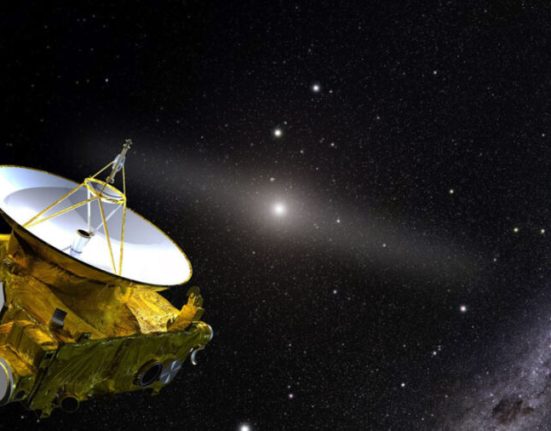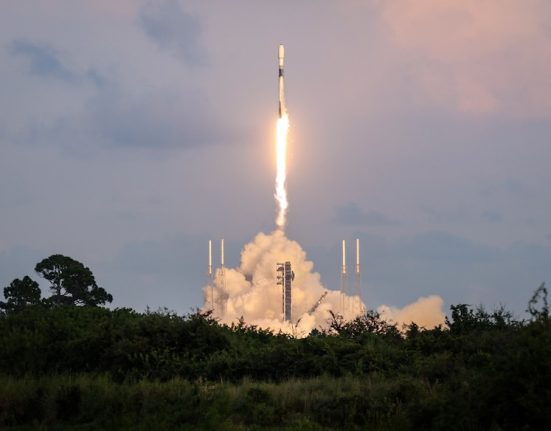Researchers from the Institute of Physical Sciences, National Autonomous University of Mexico and the International Science Center AC have identified a unique market state in the S&P 500 index related to the COVID-19 pandemic. The study, led by Dr. Manan Vyas and conducted with her team, including Mijaíl Martínez-Ramos, Parisa Majari and Professor Thomas Seligman, analyzed market behavior over a period of more than 15 years and discovered a novel state during the pandemic period. Their findings are published in the peer-reviewed journal PLOS ONE.
By analyzing the correlation of returns, the researchers observed an unprecedented market state in historical data spanning more than 15 years. This “COVID state” emerged after the initial financial panic of the pandemic and exhibited distinctive characteristics not previously seen in the market. The study used the Pearson correlation matrix and relative correlations with respect to the S&P 500 index to identify this anomaly.
“The COVID status does not appear immediately after the onset of the pandemic, but a few months later. This period corresponds to a well-identified crash with a wave of panic selling,” said Dr. Vyas. This lag between the onset of the pandemic and the emergence of the COVID status is attributed to the initial market panic that masked the more subtle correlations that emerged later.
The team’s analysis revealed that the COVID status was characterized by low average correlation and clear clustering in the correlation matrix space. This situation persisted for over a year, indicating a significant shift in market dynamics during the pandemic. The researchers employed k-means clustering to categorize market states and confirmed the robustness of the COVID status across varying amounts of clustering.
Dr. Vyas explained: “We found that a previously non-existent market state emerged in a time period closely related to the COVID pandemic. This suggests that the economic fallout and the mindset of the population during the COVID pandemic had a profound impact on market behavior.”
Further analysis showed that the transition matrices during the COVID state were almost tridiagonal, reinforcing the uniqueness of this market condition. The equilibrium distributions indicated a distinctive pattern of market behavior not observed in other periods.
The study's findings have important implications for understanding market dynamics during extreme events. The researchers emphasized the importance of considering relative correlations, which provide deeper insights into market states by filtering out the dominant effects of average correlation.
In conclusion, the emergence of the COVID-19 status highlights the need for advanced analytical tools to detect and understand new market conditions. As Dr. Vyas noted, “This example will help us in our search for relevant parameters in the stock market beyond the highest eigenvalue of the Pearson correlation matrix.”
Journal reference
Martínez-Ramos, M.M., Vyas, M., Majari, P., & Seligman, T.H. “COVID anomaly in the correlation analysis of S&P 500 market states”. PLOS ONE (2024): 19(4): e0301238. https://doi.org/10.1371/journal.pone.0301238
About the authors

Am Manuel Mijail Martinez RamosI am a future PhD candidate immersed in the world of music, swimming, and capoeira, who finds solace in the elegant complexity of mathematics and physics. I graduated with a Bachelor's and Master's degree in Physics from the National Autonomous University of Mexico (UNAM) in 2015 and 2018, respectively. My doctoral research focuses on elucidating the dynamics of financial markets from correlation patterns. I have taught at the high school and undergraduate levels since 2010 at my alma mater. My academic path has been both challenging and fulfilling, with quiet hours dedicated to studying, teaching, and research that have yielded knowledge I am proud to share with the community.
Although I may not be the loudest voice or the brightest presence in the room, my constant efforts to understand and apply the rigorous and not so easy to understand methods of Complex Systems Physics have culminated in my first publication. This work lies at the intersection of theory and practice, and represents not only a personal milestone but also a contribution that I hope will demonstrate the potential of mathematical frameworks to understand socioeconomic phenomena.
As I approach the completion of my PhD, I look forward to the new challenges and opportunities that await me in the vast expanse of knowledge yet to be discovered. My motivation goes beyond everyday learning; I aspire to bridge the gap between research and practical application to improve society.


Manan Vyas He completed his BSc in Physics from Devi Ahilya Vishwavidyalaya, Indore, India, MSc in Physics from Devi Ahilya Vishwavidyalaya, Indore, India and PhD in Physics from Physical Research Laboratory, Ahmedabad, India. He has completed postdoctoral stays at Washington State University, Pullman, USA; Yeshiva University, New York, USA and at the Institute of Physical Sciences, National Autonomous University of Mexico, Cuernavaca, Mexico. He is a Level I member of the SNI, PRIDE B and a Member of the Mexican Society of Physics.
Since 2015, she has worked as a full-time researcher at the Institute of Physical Sciences of the UNAM, where her research work is framed in the areas of random matrix theory, complex many-body systems, quantum chaos, econophysics and multivariate analysis. She has published more than 30 research articles in international peer-reviewed journals. She has been the principal investigator of two PAPIIT projects and co-investigator of a CONAHCYT Frontiers project.
She is actively involved in teaching and training human resources. She has directed one undergraduate thesis and co-directed one master's thesis. She has three undergraduate students working with her and is co-director of one doctoral thesis. She continuously teaches core and elective subjects in the faculty and graduate programs of Physical Sciences at UNAM. She has been a member of various jury committees for undergraduate, master's and doctoral students. She participates in editorial committees of international journals. Additionally, she participates in evaluation committees for PAPIIT and CONAHCYT projects. She has actively participated in the organization of various events (congresses, schools and workshops) at CIC AC, Cuernavaca on topics related to her research. She received the EPL cash prize for the best presentation at the Nuclei and Mesoscopic Physics conference held at Michigan State University, East Lansing, MI, USA in 2017. Currently, she is co-editor of the special issue on 'Entropy, Econophysics and Complexity' in the journal Entropy.


Dr. Parisa Majari She recently completed her postdoctoral research at the Faculty of Chemistry, National Autonomous University of Mexico (UNAM), Mexico City.
Dr. Majari's main research interests focus on transport behaviors and electronic properties of two-dimensional and quasi-two-dimensional materials. She has investigated how factors such as time-dependent potentials and spin-orbit coupling affect transmission coefficients and dynamic properties, as well as the impacts of nanostructuring on electronic and optical properties for innovative applications.
During her academic career, Dr. Majari obtained her BSc degree in Physics from Bu Ali Sina University and her MSc degree in Gravity from the same university. Her PhD research focused on the simulation of relativistic quantum mechanical effects in nano-optical structures and graphene, including the exploration of graphene electron properties and the investigation of relativistic electrons in nonlinear harmonic oscillator potentials.
Since completing her PhD, Dr. Majari has held several postdoctoral positions at the Instituto de Ciencias Físicas, UNAM, in Cuernavaca, Mexico. Her work has spanned diverse topics from studying Goos-Hänchen shifts in two-dimensional materials to advancing the analysis of financial markets using correlation matrices. Notably, during her postdoctoral research, she has also performed advanced computational simulations using Kwant software to investigate the electronic transport properties of few-layer graphene systems, shedding light on the band structure, density of states, and current-voltage characteristics of these 2D materials.
Additionally, during her postdoctoral period, Dr. Majari participated in a project that focused on the design and analysis of photonic waveguide arrays to simulate noncommutative spacetime dynamics, demonstrating their experimental potential.
Dr. Majari is an expert in the use of various computational tools, including Maple, MATLAB, and Python. She is also familiar with GAUSSIAN theory and density functional theory (DFT). Dr. Majari is a candidate for the National System of Researchers (SNI) of Mexico.


Thomas H. Seligman Born in 1944, stateless, in Basel, Switzerland, in 1944, later naturalized Swiss and finally Mexican.
Undergraduate studies: theoretical physics at the University of Basel. PhD at the University of Tübingen and postdocs in Mexico, Tübingen and Cologne.
He returned to Mexico in 1976 as a researcher at the National Autonomous University of Mexico, first in Mexico City and then in Cuernavaca, where he remains active at the age of 80 to this day.
Marcos Moshinsky and Hans Weidenmüller, formed personalities in their careers; the course that the former taught at the ICTP was decisive for their move to Mexico.
His research began with applications of group theory to nuclear physics and expanded to include random matrix theory, scattering theory, molecular physics, and, more recently, econophysics. A foray into seismology after the devastating 1985 Mexico City earthquake led to an influential paper in the journal Nature.
International collaborations included the United States, Canada, Brazil and, most recently, India.
The most important awards were the National Science Prize of Mexico and the Alexander V. Humboldt Prize of Germany.
He was Director and is currently President of the International Science Center and was founding President of the Morelos Academy of Sciences.
More than 200 articles in prestigious international journals with more than 7,000 citations, as well as more than 50 theses at the bachelor's, master's and doctoral levels, directed or co-directed, mainly in Mexico, but also in Switzerland, Russia and Germany, highlight his teaching activity.













Leave feedback about this